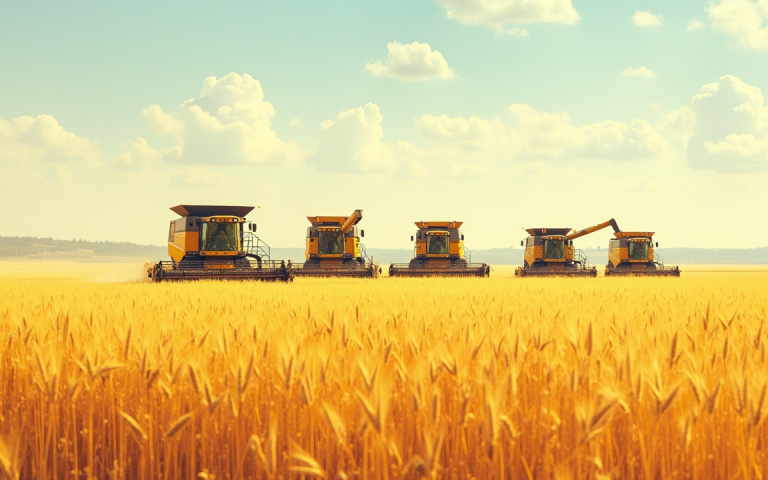Russia’s wheat harvest has plummeted to half of last year’s output, according to SovEcon, raising concerns about global grain supplies.
Russia’s wheat harvest has seen a significant decline this year, with only 11.0 million metric tons harvested as of July 11, a stark contrast to the 24.8 million metric tons recorded in 2024.
The 2025 wheat harvest faces significant challenges, currently lagging 56% behind last year’s figures, according to the consultancy.
This shortfall is attributed to two primary factors: a slower-than-anticipated harvesting pace and unexpectedly low initial yields, SovEcon said. The combination of these issues suggests a potential impact on overall wheat production and market supply for the year.
“Harvesting progress is slightly behind the average and significantly behind last year’s pace,” SovEcon said.
By July 11, only 3.2 million hectares had been harvested in Russia. This is significantly less than the 6.2 million hectares harvested by the same time last year, and also below the average of 4.1 million hectares.
Last year’s harvest commenced earlier than typical due to prevailing hot and dry weather conditions.
Russia’s yields
Initial wheat yields are noticeably lower than last year.
Russia’s average yield is currently 3.4 metric tons per hectare, a decrease from 4.0 metric tons per ha last year, according to SovEcon.
Yields are notably lower this year, primarily due to active harvesting in the drought-stricken southern regions of Rostov and Krasnodar.
These areas are experiencing adverse weather conditions, significantly impacting agricultural productivity and overall crop output compared to the previous year’s figures.
Meanwhile, in Stavropol, favorable weather conditions have contributed to slightly higher yields compared to last year, according to the consultancy.
This suggests that adequate rainfall and suitable temperatures have played a crucial role in enhancing agricultural productivity in the region, leading to a modest but positive increase in crop output.
“The wheat harvest is currently gaining momentum. As harvesting extends, yields are expected to improve,” Andrey Sizov, managing director at SovEcon said.
However, hot and dry weather may negatively impact wheat in the European part of Russia.
Hot weather
The persistently hot and dry weather conditions in Southern Russia are expected to significantly accelerate the pace of agricultural harvesting in the immediate future.
This climatic influence is likely to bring forward the completion of crop gathering, potentially impacting regional agricultural yields and market dynamics.
Simultaneously, temperatures are projected to soar to 40°C, posing substantial weather-related threats to agricultural crops.
This extreme heat could lead to widespread damage, impacting yields and potentially jeopardizing food security in affected regions. Farmers face heightened challenges in mitigating these risks.
USDA forecasts
The United States Department of Agriculture (USDA) has released its preliminary estimates for Russia’s wheat production in the upcoming 2025 season, forecasting a substantial harvest of 83.5 million metric tons.
This figure, if realised, would solidify Russia’s position as a major global wheat producer and exporter, with significant implications for international grain markets.
The USDA’s projection is a crucial data point for agricultural analysts, traders, and policymakers worldwide, as Russia’s output directly impacts global wheat supply, price stability, and food security.
This forecast will be closely watched by the global agricultural community, as any revisions or deviations from this initial estimate could lead to notable shifts in market dynamics.
Sizov said:
Still, aside from the South, the overall crop outlook remains relatively positive.
The post Russia’s wheat harvest halves amid slow pace and low yields appeared first on Invezz

